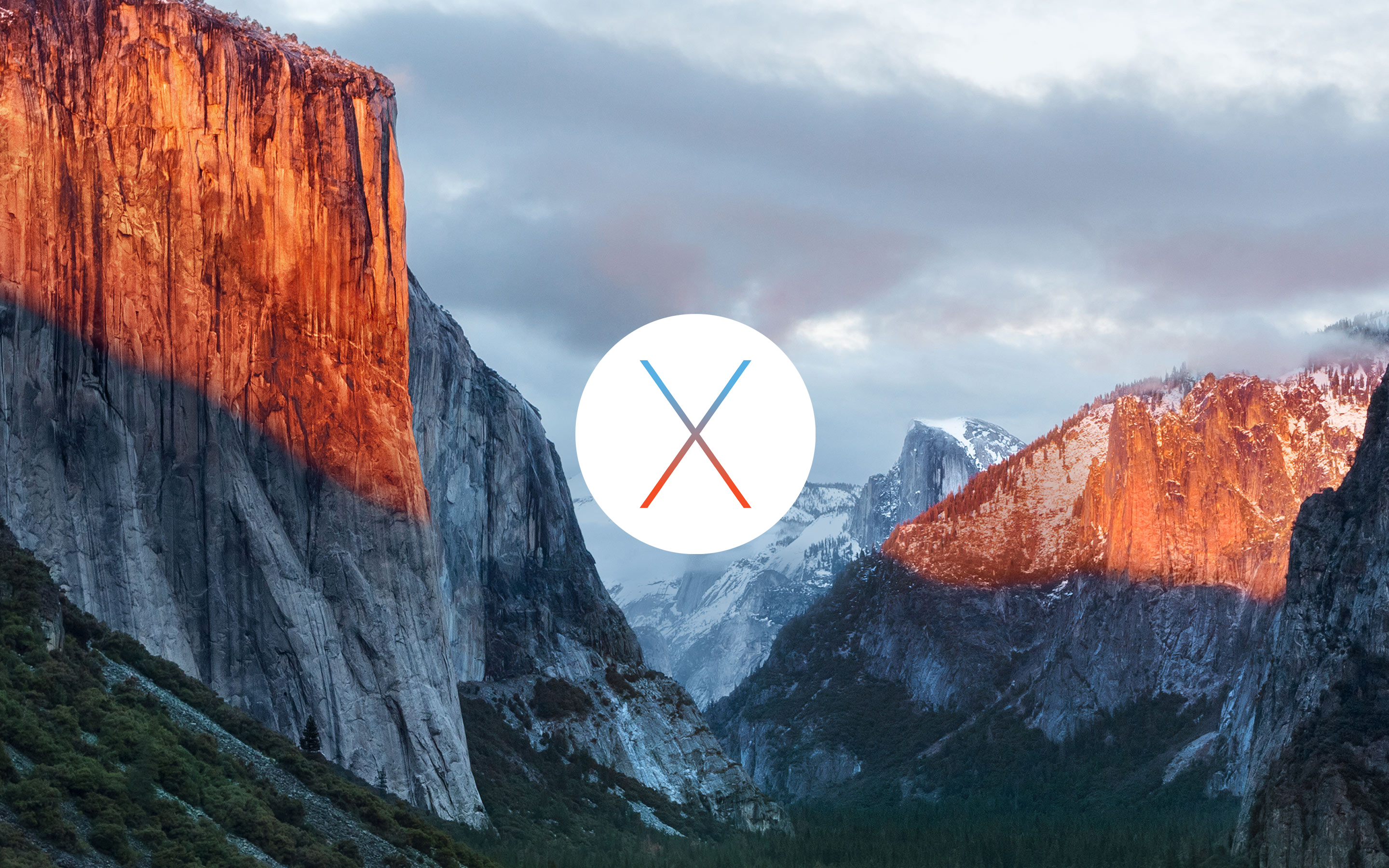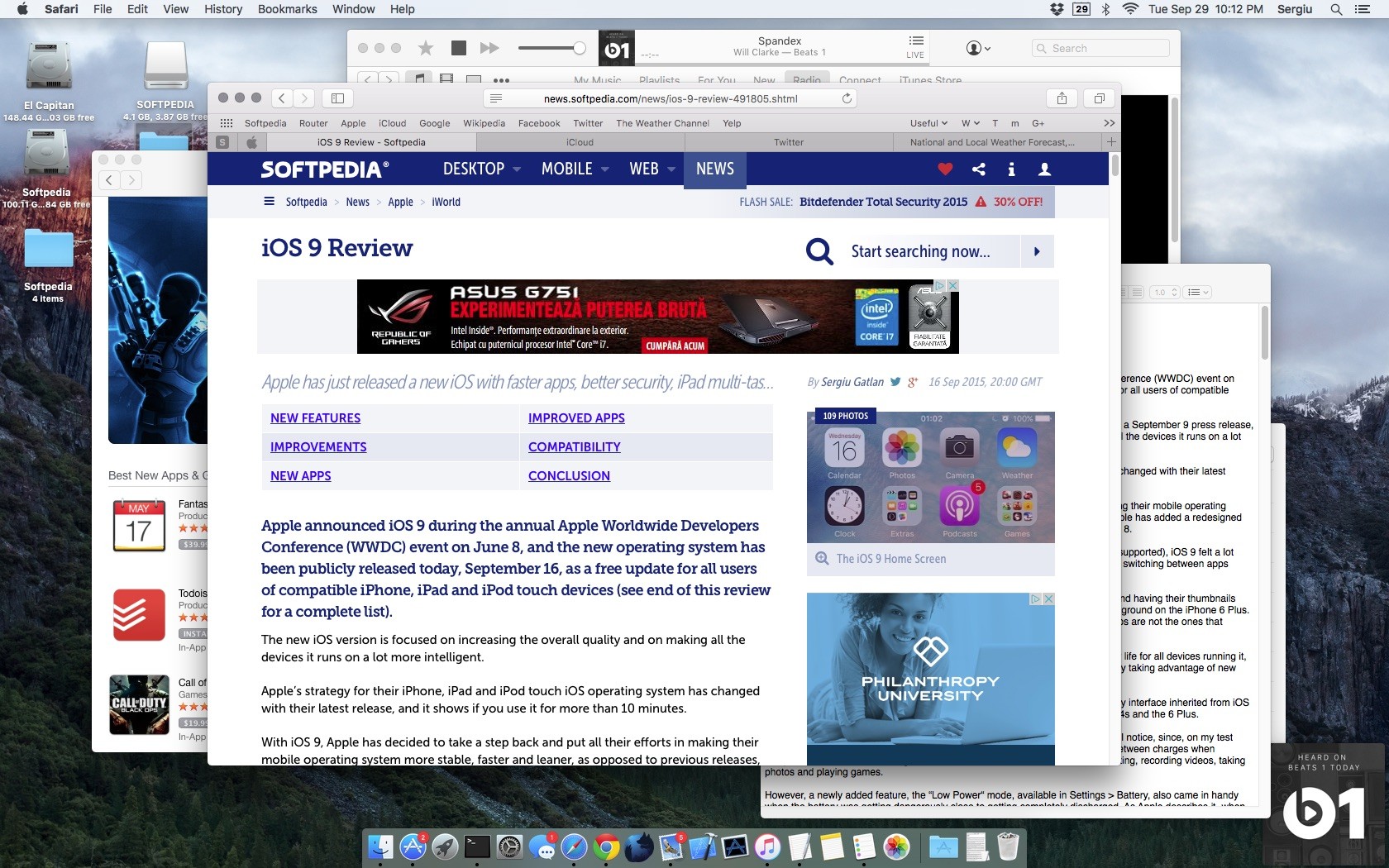
For Mac Os X El Capitan Full Official Version D
The new version of system software is officially versioned as OS X 10.11,. Get the final version of OS X El Capitan from the App store here. Be sure to start and complete backup your Mac before installing OS X El Capitan, if you. Disk operating system you'd locate the name of the current boot drive,.
By William Gallagher
Saturday, November 23, 2019, 03:23 pm PT (06:23 pm ET)
It doesn't seem that long since we were looking forward to the release of macOS El Capitan.
Apple really wants you to use macOS Catalina. And if that means you having to buy a new Mac, they'll find a way to manage their angst. Partly for this, and partly out of wanting to make it obvious to newcomers which is the current version of macOS, the company has long since hidden previous versions.
You've just not noticed because you've kept a handy copy of each one as you've upgraded over time. However, that pile of macOS installers you collected on that old external drive became worthless on October 24, 2019.
Any old macOS you have won't run anymore, because the security certificates on them expired then. However, any old macOS installer that you can download from Apple now will work.
And you can download them, you just have to know where to look —and that's also changed recently.
For some years, Apple kept the old installers for versions such as El Capitan, Sierra and High Sierra in the App Store, but hid them. You wouldn't ever see them listed and you couldn't typically find them with a direct search, either. You had to read Apple's support documentation before you could get a link that would magically open up the installer in the App Store.
That's changing.
At present, you can still manage to get macOS Mojave, and High Sierra, if you follow these specific links to deep inside the App Store. For Sierra, El Capitan or Yosemite, Apple no longer provides links to the App Store.
If you again dig through the support documentation, though, there is still a way to get one of these particular old versions.
Don't be insane. But you can still find Apple operating systems back to 2005's Mac OS X Tiger if you really want to.
You could go even further back and get macOS versions as old as Tiger from 2005. We don't recommend it, and we have zero way to test whether it actually works. Nonetheless, in a corner of Apple's website that hasn't seen a lick of paint in a decade, there is still a page to let you download Mac OS X Tiger.
It's a fast download, too, because Tiger is around 340MB. Catalina, for comparison, is 4.5GB.
But first, why you'd bother
Don't get an old version of macOS because, say, you're short on drive space and that 340MB is appealing. (Modern Macs won't run the Tiger installer anyway, they report that it's from an unidentified developer. That could also be to do with the October 24 expiration, and if so, it's hard to see Apple bothering to do anything about an OS from nearly 15 years ago.)
Even with less prehistoric releases, don't do this at all unless you have to.
It's not that it's difficult or that it's somehow risky for your Mac, but it can be pointless. If your Mac is physically capable of running macOS Catalina, you're almost certainly better off updating it to that.
The only exception is when you are reliant on older 32-bit apps as those won't run on Catalina. In that case, update to Mojave.
While Apple supports Macs going back more years than seems feasible, there are still going to be plenty of machines that cannot ever update to Catalina. And that's fine because you're probably going to leave them on whatever they're currently running.
However, it's easy to end up with old Macs that are working fine, yet could be updated a little. Maybe not all the way to Catalina, but perhaps to High Sierra, maybe El Capitan, conceivably Mojave.
If you have High Sierra, you can sometimes see an update for it in the App Store. If you're on a later OS, though, you can't find it without being given the link.
Each new version of macOS that you can update to, you should. It is worth it for features, security and reliability.
And the more up to date you can possibly make your old Mac, the longer you will be able to get useful work out of it.
For instance, we recently revived a mid-2009 MacBook Pro to turn it into a second screen for our 2018 Mac mini using Luna Display's new Mac to Mac feature.
That app supports versions of macOS all the way back to 2015's El Capitan —but no further. Our old, half-broken MacBook Pro was running macOS Yosemite but fortunately, it was capable of running El Capitan.

We just had to find it.
How to find it
Choose from the following to get the official macOS update and directly from Apple.
In each case, Apple recommends that you first check which is the latest that your Mac can run, and then thoroughly, repeatedly, back up that Mac.
Apple also notes that you can't install a version of macOS on top of a later one. You can't go back. You can, if you really needed a hobby, wipe the Mac and start again installing that older macOS, but it's hard to conceive of a benefit to your doing so.
Craig Federighi introducing macOS El Captain back in 2015
Whereas it is easy to imagine needing to update an old machine to give it some more years of life.
And maybe Apple is keeping these old updaters tucked away, maybe your old collection is now worthless, but take some time and download them all now. Disk images you download now will last you until 2029.
Keep up with AppleInsider by downloading the AppleInsider app for iOS, and follow us on YouTube, Twitter @appleinsider and Facebook for live, late-breaking coverage. You can also check out our official Instagram account for exclusive photos.
Xd-0405-u driver for mac. Just a short while ago, OS X El Capitan became available for download and installation by Mac owners. Here’s our quick guide on how to make a fast and easy transition from OS X Yosemite to OS X El Capitan.
Make sure your Mac can run OS X El Capitan
Are you running OS X Yosemite? If so, your Mac can run El Capitan as the two operating systems have exactly the same system requirements. However, if you’re not sure, here’s a list of the minimum Mac models that can run El Capitan — just know that the Mac must have a 64-bit CPU, meaning an Intel Core 2 Duo or newer processor:
- iMac (Mid 2007 or newer)
- MacBook (Late 2008 Aluminum, Early 2009, or newer)
- MacBook Pro (Mid/Late 2007 or newer)
- MacBook Air (Late 2008 or newer)
- Mac mini (Early 2009 or newer)
- Mac Pro (Early 2008 or newer)
- Xserve (Early 2009)
Make sure your Time Machine or other backup has been updated
Rocket Yard readers are intelligent and good-looking folks who always keep their Macs backed up with the help of Time Machine, Carbon Copy Cloner, SuperDuper! or another service. Just be absolutely sure you have a current backup (or two) before you start on the off chance that something goes wrong during the update to El Capitan. (OWC has an array of storage solutions to help you with this step.)
Check for the update
The update is available now. Apple pulled a fast one this time and did not make it available through the regular “Updates” tab. Instead, it’s right up front in the Featured section. Click the Download button to download the OS X El Capitan installer. Note: It’s always a good idea to run any other updates that might be available before running the OS X update. For example, this morning my iMac had an Xcode update and a security update waiting, so I ran those with the knowledge I’d be updating to OS X El Capitan later.
Run the update
I always suggest to readers that they not try to be the first one on the block to run a new OS X version. Why? Well, on occasion there have been Apple operating system updates that have had issues right out of the gate, meaning that those who waited a few hours were saved from having to do a complete reinstall rather than a simple update. Once you’ve heard that things are running smoothly on social media or blogs like The Rocket Yard, go ahead and run the update by launching the downloaded installer.
Apple’s download-only OS updates are certainly a lot faster and more convenient than those old days when we trudged to the Apple Store to buy the latest installation DVD, and the operating systems now get a much more complete beta testing period than ever before thanks to developer feedback and the Apple public beta program.
Clean install versus update
Some people I know choose OS updates like this one to re-install everything on their Mac. Clean installations take a lot longer, but the basic idea is that you’re not just overwriting older OS files — you’re literally wiping the startup drive of your Mac clean using Disk Utility (available from the Recovery Partition, which appears when you hold down Command+R at startup) and then installing a full fresh copy of the operating onto the Mac. My opinion? Unless you really have a lot of time on your hands, just do the standard update. It will take a lot less time than doing a full clean install and chances are very good that the update will go smoothly.
Enjoy OS X El Capitan
Most of the early reviews of OS X El Capitan reiterate one point — it’s like a tune-up for your Mac. Core pieces of the operating system have been re-written to optimize speed, and every Mac should see an improvement in everything from app launch times to faster previews of PDFs. Many built-in apps have also been tweaked to provide Mac owners with the most efficient user interface, which should further improve your experience with El Capitan.
Let us know in the comments section how things go for you when you update to OS X El Capitan, and how you like — or maybe aren’t thrilled with — the changes.
Learn more: Check out more OS X El Capitan coverage from the Rocket Yard here.